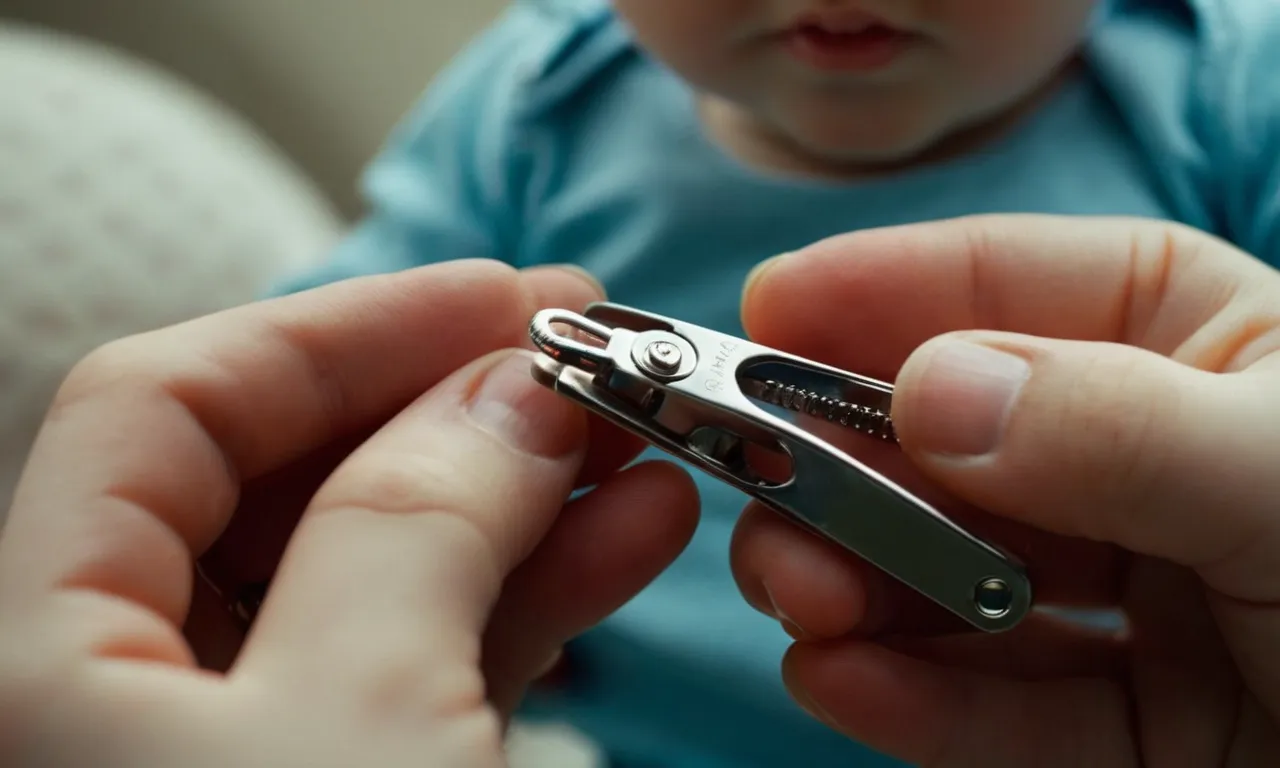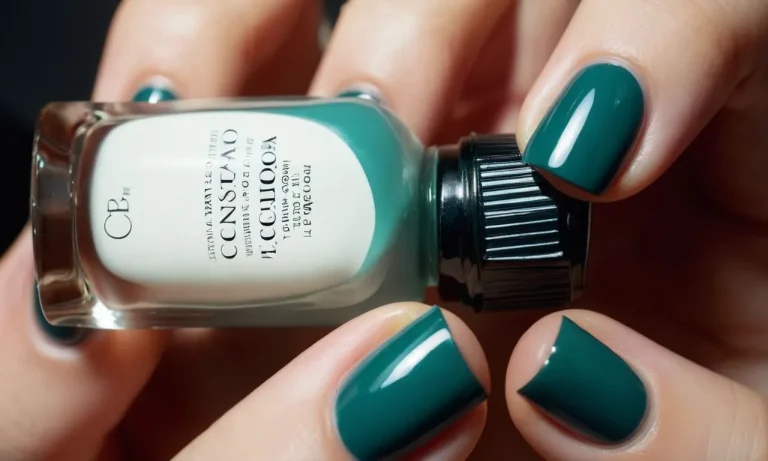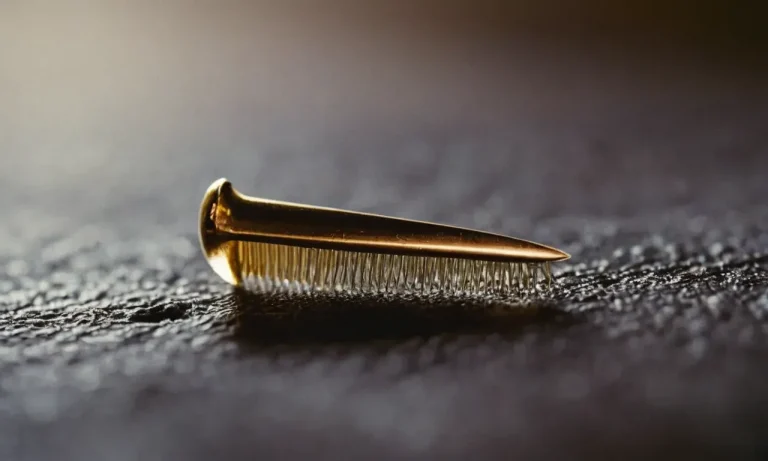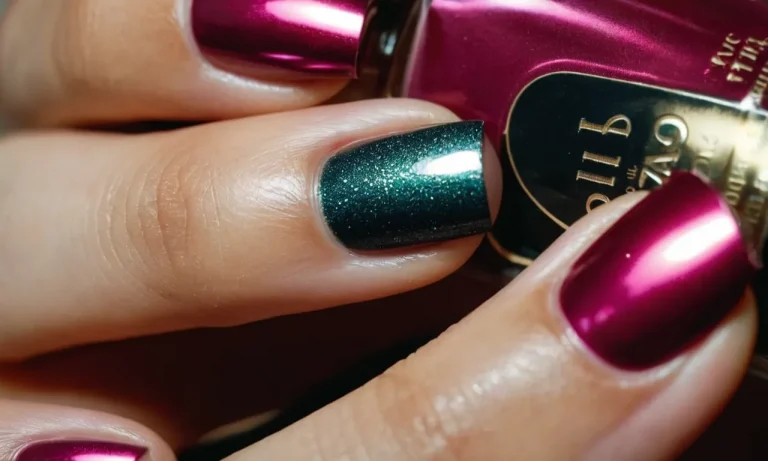Can Cutting A Baby With Nail Clippers Cause Tetanus?
Accidentally nicking your baby while trimming their nails can be scary for any parent. You may worry about the potential for infection or other health complications. So can using nail clippers on a squirming baby lead to the dangerous bacterial illness tetanus?
If you’re short on time, here’s the quick answer: Yes, it is possible for a baby to develop tetanus if the skin is broken by a nail clipper or other object that transfers tetanus bacteria into the wound.
However, as long as the baby is up to date on DTaP vaccinations as recommended, their risk of contracting tetanus from a minor cut is extremely low.
What is Tetanus?
Tetanus is an infection caused by the bacterium Clostridium tetani. This bacterium produces a toxin that affects the nervous system, leading to painful muscle contractions and spasms.
Caused by Clostridium Tetani Bacteria
Clostridium tetani is an anaerobic, Gram-positive, spore-forming rod-shaped bacterium. Spores of C. tetani can lie dormant in the soil or in animal waste for years before entering the body through wounds or cuts in the skin.
Enters Body Through Wounds
Tetanus spores can enter the body through broken skin, usually through injuries contaminated with soil, dust, or animal waste. Common causes include puncture wounds, burns, injecting drugs, body piercing, unclean surgical procedures, splinters, and insect bites.
Causes Painful Muscle Contractions
Once in the body, the spores germinate into active bacteria that produce a neurotoxin called tetanospasmin. This toxin disrupts nervous system signaling, causing painful involuntary muscle contractions and spasms. The jaw is usually affected first, leading to lockjaw.
Can Be Fatal Without Treatment
Without treatment, tetanus can be fatal in up to 50% of cases as the toxin spreads through the body. Death usually results from spasms of the vocal cords or respiratory muscles, or from cardiac arrest after weeks of muscle spasms. With modern intensive care, the mortality rate is around 10%.
Tetanus is preventable through vaccination. The CDC recommends DTaP vaccine for children and Tdap boosters for adolescents and adults. Prompt wound care, antibiotics, antitoxins, and supportive therapy can treat tetanus after infection occurs.
Overall, tetanus is now rare in places with good access to vaccines and medical care.
Tetanus Vaccine Greatly Reduces Risk in Infants
DTaP Vaccine Schedule
The tetanus vaccine, known as DTaP, is an essential part of an infant’s vaccination schedule to protect against the life-threatening disease tetanus. DTaP stands for diphtheria, tetanus, and acellular pertussis. It is given as a series of 5 shots at 2, 4, 6, 15-18 months, and 4-6 years old.
This schedule provides maximum protection for babies and children against tetanus.
According to the CDC vaccination schedule, the first 3 DTaP shots are given at least 4 weeks apart to children under age 7. The 4th shot is given 6-12 months after the 3rd shot, and a 5th booster dose is recommended when a child enters school at ages 4-6.
This schedule builds up and then reinforces immunity to tetanus so that dangerous toxins released by tetanus bacteria can be quickly neutralized by antibodies before infection occurs.
Studies show that when infants and children follow the recommended schedule, the DTaP vaccine is 80-95% effective at preventing tetanus. Getting all 5 recommended doses is key for robust and long-lasting protection well into the school years and beyond when risk of cuts and scrapes increases.
Provides Long-Lasting Immunity
The DTaP vaccine provides immunity that can last at least 30 years according to the CDC. The tetanus toxin is so potent that even small amounts can trigger painful muscle spasms and lockjaw. But when babies get the DTaP series on time, they develop blood levels of protective antibodies that block the toxin and prevent infection.
In one study published in the New England Journal of Medicine, full vaccination provided immunity for at least 34 years in 90% of people. Partial vaccination still offered protection for 20 years. This demonstrates the effectiveness of the early childhood DTaP schedule at inducing robust and long-lasting immunity well into adulthood.
The Tdap vaccine given between ages 11-12 offers a tetanus booster to maintain optimal protection through the teen years when sports injuries or motor vehicle accidents become more common. But the powerful immunity from the initial DTaP series in infancy and early childhood forms the foundation for lifetime protection against the tetanus bacteria and its harmful toxins.
Following the recommended vaccination schedule can virtually eliminate the risk of painful tetanus infection in babies and children. The early protection provided by DTaP shots is safe, effective and lasts for decades – a true modern medical marvel!
Even Minor Cuts Can Introduce Bacteria
Nail Clippers Not Sterile
While nail clippers are a common tool found in many households, most people do not realize that they harbor bacteria and are not sterile (1). Even clippers that appear clean can contain microorganisms invisible to the naked eye.
Studies have found that 79% of sampled nail clippers tested positive for bacterial contamination (2). The most prevalent bacteria found on clippers are Staphylococcus aureus and Pseudomonas aeruginosa, both of which can cause serious infections (3).
One study even detected hepatitis B virus DNA on over 10% of sampled clippers (4). Yikes! Nail clippers’ small, jagged surfaces provide the perfect environment for bacteria to cling to and build up over time. Without proper sterilization between uses, they pose an undisclosed health hazard.
Small Nick Could Be Enough
While most parents are cautious about properly sterilizing larger instruments like scissors before trimming their baby’s nails, they may not take the same precautions with smaller nail clippers. Even the tiniest, barely noticeable cut from an unsterilized clipper could be enough to allow infection-causing bacteria to enter the baby’s bloodstream.
Tetanus, in particular, is a concern since it can be contracted through contaminated puncture wounds (5). The tetanus bacteria, Clostridium tetani, produces a dangerous neurotoxin that can cause painful muscle contractions and spasms.
Thankfully, tetanus is rare in the US today thanks to modern sterile practices and DTaP vaccination. Still, why risk it? Always thoroughly clean and disinfect clippers with 70% isopropyl alcohol before each use.
To avoid transmitting bacteria when trimming your baby’s nails, follow these guidelines:
- Clean clippers with soap and hot water between uses.
- Sanitize with 70% isopropyl alcohol.
- Sterilize clippers periodically by boiling for 5-10 minutes.
- Wash hands thoroughly before and after trimming nails.
- Use caution and avoid nicking delicate skin.
- Keep an eye out for signs of infection like redness/swelling.
By taking a few simple precautions, you can keep your baby’s clipper time safe and snuggle-worthy! Those teeny nails will be trimmed in no time.
| Bacteria Detected on Nail Clippers | Potential Health Risks |
|---|---|
| Staphylococcus aureus | Skin infections, pneumonia, meningitis |
| Pseudomonas aeruginosa | Urinary tract infections, pneumonia, blood infections |
| Escherichia coli | Food poisoning, intestinal infections, urinary tract infections |
- https://pubmed.ncbi.nlm.nih.gov/16418523/
- https://pubmed.ncbi.nlm.nih.gov/22676444/
- https://www.ncbi.nlm.nih.gov/pmc/articles/PMC4692156/
- https://pubmed.ncbi.nlm.nih.gov/9152513/
- https://www.cdc.gov/tetanus/about/causes-transmission.html
Signs of Tetanus Infection
Muscle Spasms and Lockjaw
One of the first and most telltale signs of tetanus is muscle spasms and stiffness, particularly in the jaw muscles. This can cause “lockjaw,” where the jaw clenches and stiffens, making it difficult to open the mouth.
These muscle contractions usually begin around the jaw and neck, but can spread to other muscles throughout the body. The spasms may be very painful and last for several minutes. In severe cases, they can become strong enough to cause bone fractures.
These muscle spasms are caused by tetanus neurotoxin interfering with neurotransmitters that signal muscles to relax. With the relaxation signals blocked, muscles remain continuously contracted.
Trouble Swallowing
The lockjaw and muscle rigidity in the throat can make swallowing difficult. This symptom develops in about 60% of people with generalized tetanus infection. Trouble swallowing leads to drooling as well as problems eating and drinking.
In extreme cases, the airway can become obstructed due to spasms, causing life-threatening breathing difficulties.
Fever and Rapid Heart Rate
Most people with tetanus infection develop a fever over 100.4°F (38°C). Fevers are caused by the body’s immune response to the tetanus bacteria. Immune cells release pyrogens, substances that raise body temperature in an effort to kill the invading bacteria.
Tachycardia, a resting heart rate faster than normal, is also common. The heart rate may increase to over 140 beats per minute as toxin spreads through the body. Researchers believe autonomic instability from tetanus toxin is the likely cause of rapid heart rate.
Other symptoms of autonomic dysfunction may include excessive sweating, unstable blood pressure, and abnormal heart rhythms.
Treating Tetanus
Wound Care and Medications
If a person develops symptoms of tetanus, the wound area requires proper cleaning, removal of dead tissue, and antibiotics to eliminate toxin-producing bacteria, according to the Centers for Disease Control and Prevention (CDC) guidelines.
Doctors typically prescribe penicillin or metronidazole antibiotics. In severe cases, patients may need muscle relaxants, like diazepam, or medications to regulate nervous system activity, such as magnesium sulfate or baclofen.
Ventilator May Be Needed
The tetanus neurotoxin causes painful muscle contractions and spasms, which can interfere with breathing in approximately 10% of those affected, says the CDC. These patients often require mechanical ventilation via a breathing machine for up to 3 weeks.
Sedation medication helps relax the muscles during this critical intervention until the toxin clears from the body.
Hospital Care Often Required
Those diagnosed with generalized tetanus that causes body-wide symptoms typically require intensive hospital care and monitoring. Individuals may need to stay in sterile environments to prevent secondary infections.
Nutrition support, intravenous fluids, proper wound care, and medication adjustments are standard during the weeks-long recovery process. Approximately 11% of tetanus patients die even after receiving the best available treatment, according to Stanford Children’s Health.
Conclusion
While any cut carries a small risk of infection, an up-to-date DTaP vaccination is over 95% effective at protecting babies against tetanus. Still, sterilizing nail clippers between uses and taking care not to pinch the skin while trimming can help prevent even minor injuries.
If a deeper cut does occur or you notice signs of infection, contact your pediatrician right away to ensure proper treatment.







